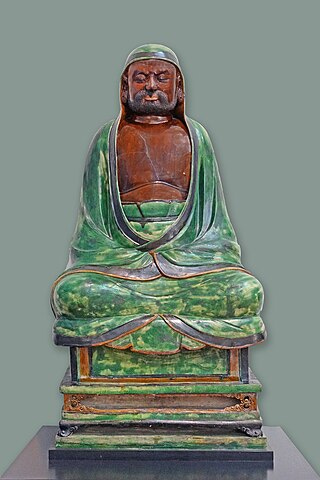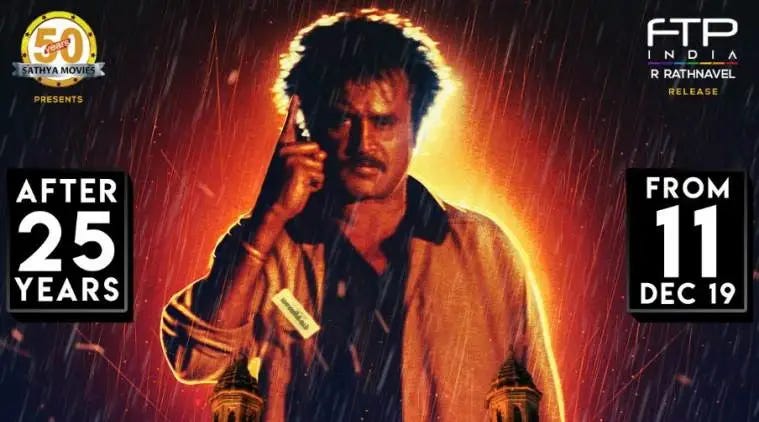Spirituality is often marketed as the domain of ‘ love, light, and healing’, often erasing the aspects of the work that require discipline, commitment, and - sometimes - a whack on the head with a meditation stick. That is a form of Fierce Love.
The latter approach is more common for spiritualists who are deeply rooted in the here and now and whose life paths include a strong commitment to take a stand against injustice, exclusion, abuse, and so on.
You also see the same attitude in martial artists, especially those who come from spiritually-grounded disciplines such as Shaolin Martial Arts and Wing Chun. Yesterday’s piece talked about how Wing Chun is an analogy for the wielding of authority with mastery and grace.
For reference, Shaolin kung fu is said to have been influenced by Bodhidharman, the Patriarch of Zen Buddhism - who was originally said to be a Pallava Prince from South India. He was the kind of person to beat an aspirant who spoke from ego with a stick of teaching (on the head), and to cut off his own eyelashes to stay awake in meditation.
He essentially stared down the Shaolin monastery that denied him access by undertaking rigorous wall-gazing meditation in a cave for years on end. This man was deeply disciplined but also knew that applications of force and intensity were necessary as part of the spiritual work he came to do.
Wing Chun was founded by Ng Mui, a Buddhist nun who was one of the Five Legendary Elders who survived the destruction of the Shaolin Monastery. Her style was designed to help a smaller opponent defend themselves from one with greater size and physical strength. More on that in yesterday’s article.
On that note, I found a video of Bruce Lee this morning (who was trained in Wing Chun) instructing a student from one of his movies.
Instantly, I recognized that this was what I would normally teach and with as much intensity at the energetic level.
It is also why I do not take students.
Most students prefer to focus on the finger and not the heavens.
These days, people want spirituality and training to feel soft and cuddly.
When you stand at the edges between safety and harm to yourself or another, you cannot afford that luxury.
It’s certainly a theme I have thought of over the years and it takes a rare kind of person to understand what that means in practice. In the video above, I explore these themes in conversation with Aadhar Malhotra, a martial arts instructor, and long-time friend.
We have a shared respect and understanding for the kind of laser-sharp focus that is required to master these forms, but equally, the deep restraint that it takes to not actually use any of it.
During the discussion, Aadhar references this idea with a quote from Christopher Voss:
“ It takes far more strength to extend an open hand when you know precisely know how to make a fist”
And that is a core aspect of martial arts philosophy in action. Despite the ability to cause harm or inflict pain, those who live the path will rarely choose to do so unless there is no other path forward.
Those who have never really taken the time to discipline and condition their bodies, minds, and spirits, will easily valorize violence as a solution.
This is very different from a strategic use of force when absolutely necessary, for example when running away from an attacker or protecting someone from harm.
Those who have ethically and spiritually grounded themselves in learning the arts of war understand the changes that occur when you choose the path of violence for its own sake.
For when you seek to destroy another, it is you that you ultimately destroy.
In the discussion, we also look at the kind of line that needs to be crossed before one resorts to violence as a final solution. As a beautiful example of this, we discuss an iconic Tamil film called Baasha (1995).
The correct spelling is Baashha, but that’s probably for numerological reasons.
Whilst not a martial artist, Baasha conveys the cost of violence in a way that people can understand - and demonstrates when it is absolutely necessary. His discipline and restraint resonate with martial arts philosophies grounded in spiritual practices as discussed above.
The first half of the movie depicts a very kind, gentle, and soft rickshaw (auto) driver named Manickam. He is shown to avoid all kinds of violence and lives solely to fulfill the wishes of his deceased father, i.e. to take of his siblings and set them on their life paths. At one point, he willingly surrenders to be beaten by a local thug who would have otherwise harmed his brother. And you see him smiling without trying to defend himself as he is beaten on a pole in the rain.
The second half of the movie is completely different. The same thug then attempts to sexually assault his sister in the middle of the road. Manickam transforms into an entirely different person: his former self, Baasha.
His siblings are in shock as they cannot recognize the person in front of them. His mannerisms, behavior, intense focus, and ability to destroy are completely foreign compared to the mild-mannered brother who just kept his head down and did his best.
Then comes the flashback.
Manickam was an innocent living in Mumbai, who transformed into a powerful don. He turned to violence after the ruling mob boss of Mumbai (Marc Anthony) had his best friend murdered. He becomes solely focused on revenge, and acquiring the means to destroy his adversary.
The rest of the movie is about the choice that Manickam must make. The difference in personality between Manickam and Baasha is day and night. And you really get to see the sacrifices of joy, humanity, and connection, that Baasha must make to transform into the weapon that destroys his opponent.
This film is best watched in Tamil with subtitles. You really get a sense of the power the actor, Superstar Rajinikanth, is able to convey and his sheer range of expression.
It is also unsurprising that the actor himself is a deeply spiritual man who is a follower of Mahavatar Babaji and spends months in the Himalayas in meditation.
There’s more in the video discussion, but these are the key lessons and take-home points.
Discussion Host: Aadhar Malhotra
Husband, Martial artist & teacher, lifetime student learning to be human, blessed by the divine gods of comedy, carrying love in my heart and a big stick in my hand to beat people and the drums, because some people need a lesson and everyone needs music.
He also offers online martial arts training in Filipino martial arts, Shaolin forms, Qi Gong, and Jeet Kune Do. You can reach him at his instagram profile @aadharmalhotra
Speaker: Dr. Bairavee, The Sky Priestess
For those of you who are new to me, here’s my bio on LinkedIn. I have 11 years of experience in spiritual facilitation, meditations, pilgrimages, and workshops around the world, and have spent tens of thousands of hours in one-to-one sessions with clients from diverse walks of life.
Sessions and current programs available are here.
Enjoy!
Dr. Bairavee, The Sky Priestess
*
*
*
*
*
Text © Dr Bairavee The Sky Priestess 2013-2025. All rights reserved
Video 1: Discussion between Aadhar Malhotra and Dr. Bairavee. Edited and shared with permission.
Video 2: Bruce Lee - Finger pointing to the Moon. Fair Use.
Image 1: Ming dynasty (1368–1683) sandstone statue of a seated Bodhidharma (Chinese: 達磨; Pinyin: Dámó). 1484 by Jean-Pierre Dalbéra from Paris, France - Le patriarche Bodhidharma (V&A Museum)
Image 2: Baashha to re-release in select theaters on December 11 (2019). Indian Express. Fair Use.






Excellent...ju jit su hontu